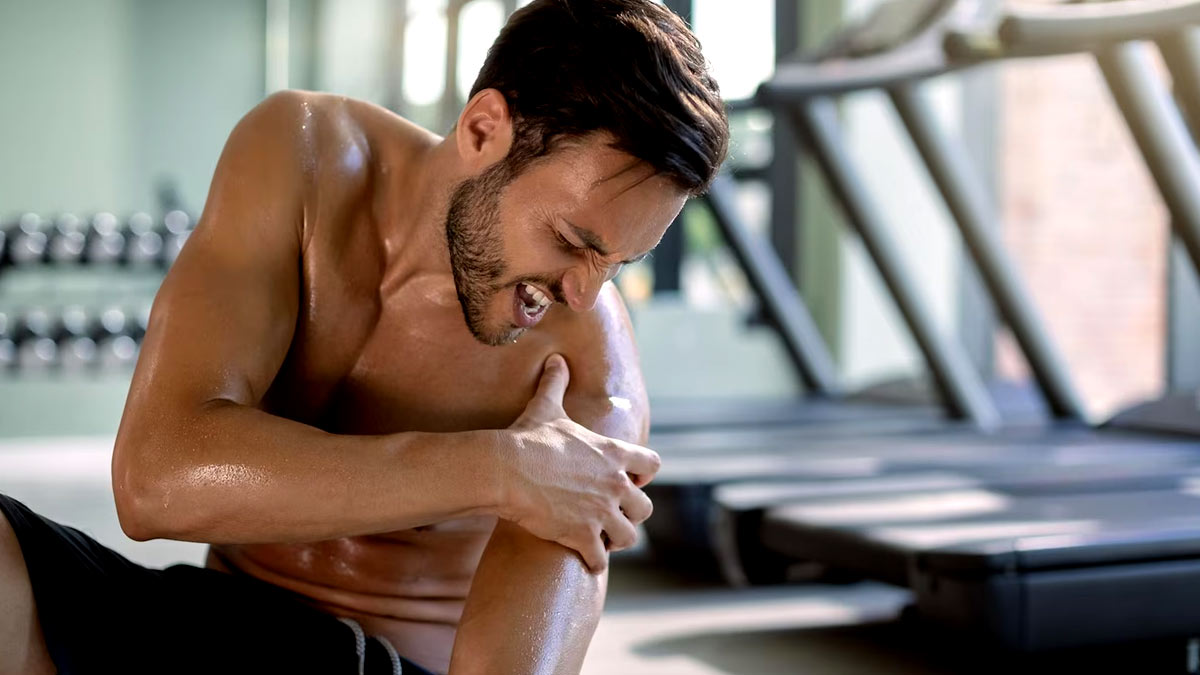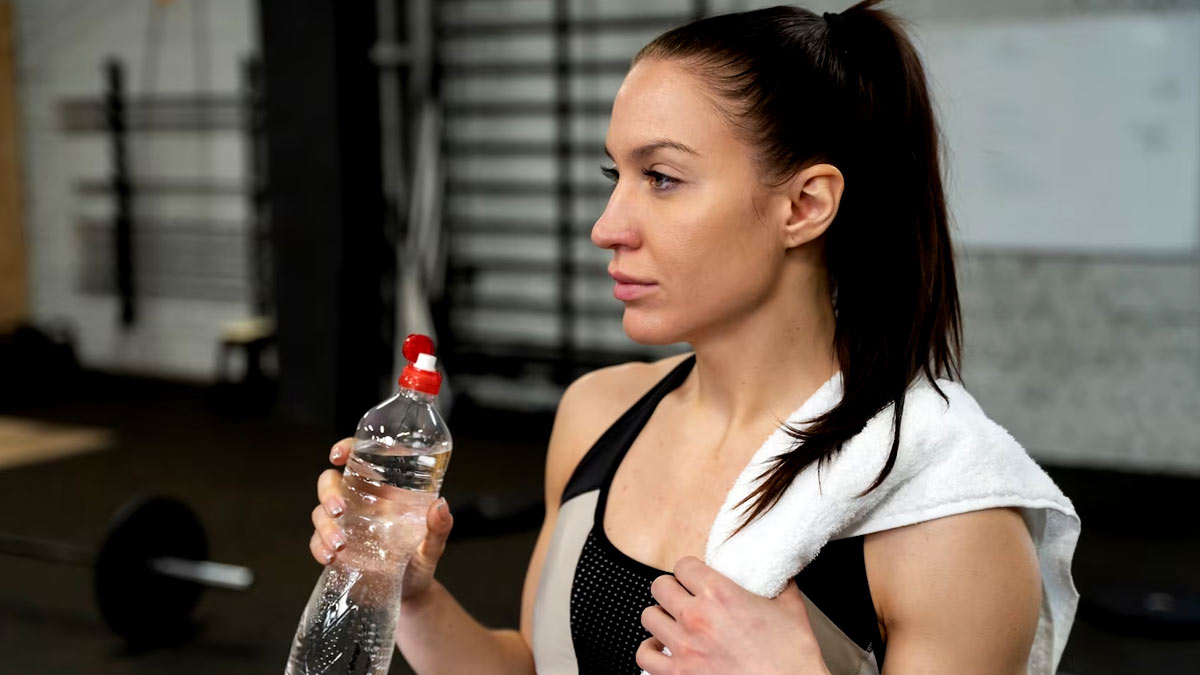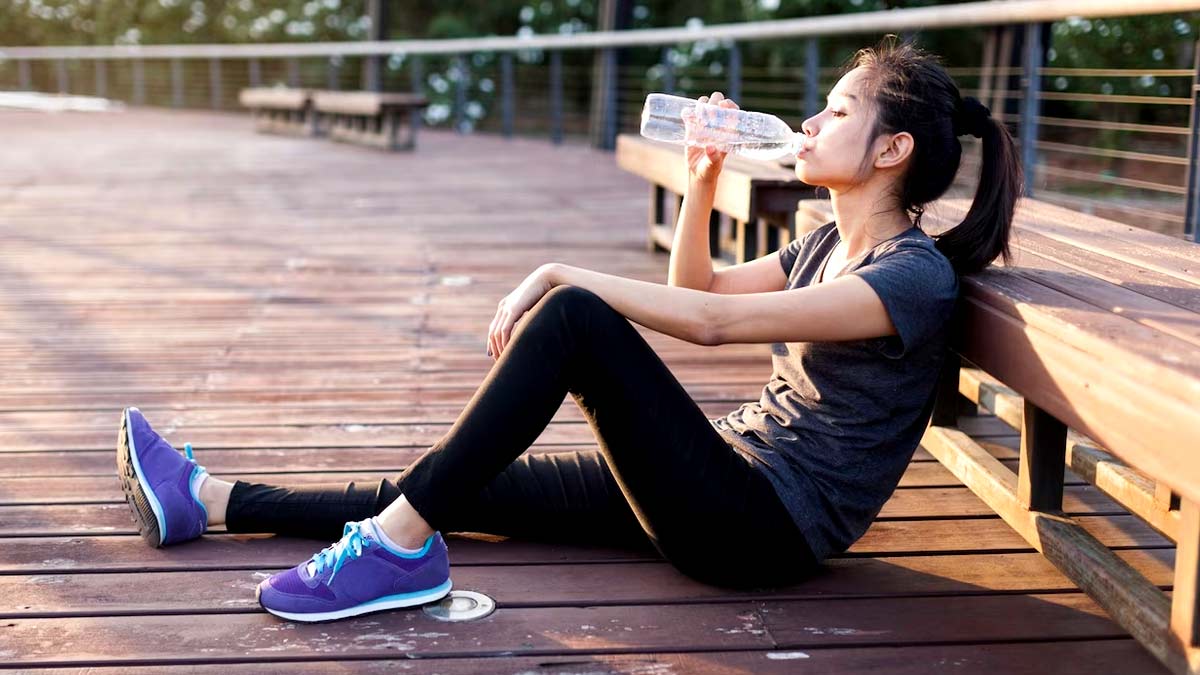Muscle Cramps After Workout? Expert Lists Effective Ways To Get Rid Of It


Completing a strenuous workout can leave you with a sense of accomplishment, but it’s not uncommon to experience muscle cramps as an unwelcome aftermath. Muscle cramps are involuntary contractions of muscle fibres that can be uncomfortable and even painful. While they are a common occurrence, they can be managed effectively. We spoke to Ishaan Arora, Karnal-Based Body Building India Certified Fitness Trainer, who listed tips to get rid of muscle cramps and promote a smoother recovery after your workout.
Tips To Alleviate Muscle Cramps After Workout

Stay Hydrated
Arora said, “One of the primary causes of muscle cramps is dehydration. Ensuring adequate fluid intake before, during, and after your workout can help prevent cramps. When you’re dehydrated, your muscles are more prone to contracting involuntarily.” Aim to drink water consistently throughout the day, and consider consuming electrolyte-rich fluids to maintain the balance of essential minerals lost during exercise.
According to the Sports Medicine (Auckland), muscle cramps that manifest during or shortly after physical exertion are referred to as Exercise-Associated Muscle Cramps (EAMC). These are frequently characterised as a ‘painful, spasmodic contraction of skeletal muscle that arises during or immediately following physical exercise’.
Proper Warm-up and Cool-down
A proper warm-up before your workout and a thorough cool-down afterwards can significantly reduce the chances of experiencing muscle cramps. Arora added, “Gradually increasing your heart rate and loosening up your muscles through dynamic stretches prepares them for the workout ahead. After exercising, cooling down with gentle stretches helps to prevent sudden muscle tightness.”
Also Read: From Burning Calories To Full Body Workout: Here’s Why Burpees Should Be Your Go-to Exercise

Stretch and Foam Roll
Stretching after a workout can help alleviate muscle tension and prevent cramping. Arora said, “Focus on the muscles you worked during your session, holding each stretch for around 20-30 seconds. Additionally, incorporating foam rolling into your routine can provide myofascial release, helping to release muscle knots and reducing the likelihood of cramps.”
Balanced Electrolytes
Potassium, magnesium, sodium, and calcium are vital electrolytes that have a significant impact on the functioning of muscles. An imbalance of these minerals can lead to muscle cramps. Consume a diet rich in foods that provide these essential nutrients, or consider incorporating electrolyte supplements, especially during intense workouts or in hot weather.
Gradual Progression
Sudden increases in workout intensity or duration can strain your muscles, making them more susceptible to cramps. Arora highlighted, “To prevent this, aim for gradual progression in your training routine. Increase weights, distances, or intensities incrementally to give your muscles time to adapt.”
Also Read: From Zumba To Bollywood Dance: Here’re 5 Best Cardio Dance Workouts

Proper Nutrition
A well-balanced diet that includes an adequate intake of protein, carbohydrates, and healthy fats can help prevent muscle cramps. Protein supports the recovery of muscles, while carbohydrates restore glycogen levels and offer energy. Essential fatty acids contribute to overall muscle and joint health.
Massage and Self-care
Massaging your muscles can help increase blood flow and alleviate tension, reducing the risk of cramps. Consider using a foam roller, or massage stick, or seeking professional massage therapy to relax tight muscles and promote recovery.

Rest and Recovery
It’s crucial to give your body enough time to rest in between workouts. Overtraining might result in cramping more frequently and muscle exhaustion. Incorporate rest days into your routine and ensure you’re getting enough sleep for proper muscle recovery.
Stay Active on Rest Days
While rest is crucial, light, low-intensity activities on rest days can improve blood circulation and prevent muscles from becoming stiff. Engage in activities, such as walking, yoga, or gentle stretching to keep your muscles moving without overexerting them.
Consult a Professional
If muscle cramps persist despite trying these strategies, it may be beneficial to consult a healthcare professional or a sports medicine specialist. Underlying medical conditions, nutrient deficiencies, or imbalances might be contributing to your cramps.
Disclaimer
The information provided in this article is shared by a fitness expert and is for informational purposes only. Hence, we advise you to consult with your expert for a treatment tailored to your needs.
